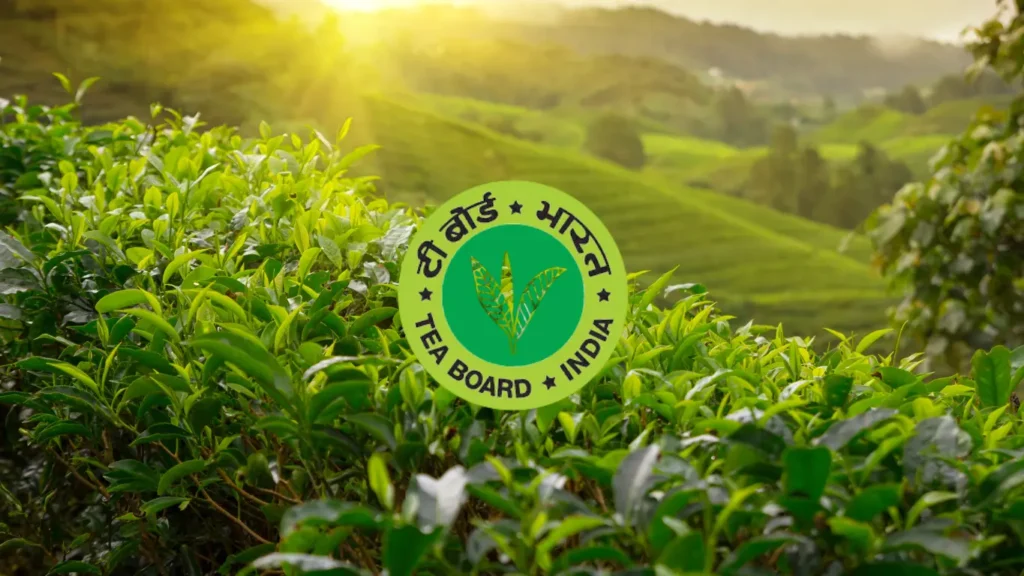
The Tea Board of India is a key organization that oversees the tea industry, ensuring it thrives both locally and globally. Established in 1954, it plays a vital role in regulating how tea is grown and exported, while also working to boost its popularity. This blog explores how the Tea Board manages these tasks, highlighting its impact and future plans.
Regulatory Functions
The Tea Board regulates the tea industry by controlling cultivation and exports. It registers all tea gardens and approves new plantations to prevent overproduction. Quality standards are set to ensure safety, especially for exports, and it collects excise duties to fund its activities. These efforts help maintain a stable and sustainable industry.
Promotional Activities
To promote tea, the Board conducts market research to find new buyers and runs advertising campaigns to increase consumption. It also collaborates internationally, attending trade fairs and supporting research to improve tea quality. These efforts aim to make Indian tea more competitive and appealing worldwide.
Organizational Structure and Impact
Based in Kolkata, the Tea Board has a diverse membership including producers and workers, with offices across India and overseas in places like London and Dubai. Its work has standardized tea quality, supported innovation, and improved worker welfare, significantly boosting the industry’s global reputation.
Challenges and Future
The Board faces challenges like climate change affecting tea production and market price fluctuations. It seems likely that future efforts will focus on sustainable practices, digital tools, and supporting small growers to ensure the industry’s growth.
Survey Note: Detailed Analysis of the Tea Board of India
The Tea Board of India, a statutory body under the Ministry of Commerce and Industry, was established on April 1, 1954, under the Tea Act 1953. Its origins trace back to the Indian Tea Cess Bill of 1903, which levied a tax on tea exports to fund promotion efforts both within and outside India.
This organization plays a pivotal role in regulating and promoting the tea industry, a vital sector of India’s economy, and is particularly significant given tea’s status as a beloved national beverage. This detailed survey note explores its functions, structure, impact, and future directions, providing a comprehensive overview for stakeholders and enthusiasts alike.
Historical Context and Establishment
The genesis of the Tea Board dates to 1903 with the Indian Tea Cess Bill, aimed at promoting Indian tea globally through export taxes. The current Tea Board was formally constituted under Section 4 of the Tea Act 1953, succeeding earlier bodies like the Central Tea Board and the Indian Tea Licensing Committee, which operated under repealed acts from 1949 and 1938, respectively.
This historical evolution underscores its long-standing role in industry governance, with its establishment reflecting a need for centralized control to enhance competitiveness and sustainability.
Regulatory Functions
The Tea Board’s regulatory powers are extensive, ensuring the orderly development of the tea industry. It controls tea cultivation by registering all tea gardens, maintaining a database crucial for policy-making, and approving new plantations to manage supply and demand.
This prevents overproduction, which could destabilize markets, and aligns with international agreements. Quality control is another critical function, with the Board setting standards for pesticide residues and heavy metals, conducting inspections to ensure compliance, especially for exports.
It also regulates exports by issuing quotas and monitoring quantities, ensuring market stability and compliance with global trade norms. Additionally, it levies an excise duty on tea production, with revenues funding promotional activities, research, and worker welfare programs. These functions collectively ensure a structured and sustainable industry, as detailed on the official website (Official Website of Tea Board India).
Promotional Activities
Promotion is a core mandate, with the Tea Board actively working to enhance tea consumption and market reach. It conducts market research to identify new markets, tailoring strategies to regional preferences, and organizes trade delegations to international fairs, boosting visibility.
Advertising campaigns highlight tea’s flavor, aroma, and health benefits, leveraging digital platforms to reach wider audiences. International collaboration is facilitated through participation in forums like the International Tea Committee, fostering global relationships. The Board also supports research and development, funding projects on cultivation techniques and product innovation, and offers training programs to improve skills among producers and workers.
These efforts, as noted on the Ministry of Commerce’s portal (Ministry of Commerce and Industry), aim to make Indian tea competitive and appealing, addressing both domestic and export markets.
Organizational Structure
The Tea Board’s structure is designed for inclusivity and efficiency, comprising 32 members, including a Chairman and Deputy Chairman from the Ministry of Commerce and Industry, appointed by the Government of India.
Members represent tea producers, traders, workers, state governments from major tea-growing regions, and Parliament, ensuring diverse perspectives. The headquarters, located in Kolkata, a historical tea trade hub, oversees operations, with two zonal offices in Jorhat, Assam, and Coonoor, Tamil Nadu, and 18 regional offices across tea-growing states and metros.
Overseas offices in London, Dubai, and Moscow promote Indian tea globally, organizing events and providing market intelligence. The Board operates through standing committees—the Executive Committee for administration, Development Committee for research, Labor Welfare Committee for worker issues, and Export Promotion Committee for trade—ensuring specialized focus, as outlined on Wikipedia (Tea Board of India – Wikipedia).
| Aspect | Details |
|---|---|
| Composition | 32 members, including Chairman, Deputy Chairman, producers, traders, workers, states, Parliament |
| Headquarters | Kolkata, West Bengal |
| Zonal Offices | Jorhat (Assam), Coonoor (Tamil Nadu) |
| Regional Offices | 18, spread across major tea-growing states and metros |
| Overseas Offices | London, Dubai, Moscow |
| Committees | Executive, Development, Labor Welfare, Export Promotion |
This structure facilitates effective governance and outreach, supporting both regulatory and promotional roles.
Impact on the Industry
The Tea Board’s impact is profound, transforming the Indian tea industry into a robust sector. It has standardized quality, enhancing global reputation and demand, particularly for premium varieties like Darjeeling tea, through certification to prevent fraud.
By controlling plantation expansion and export quotas, it ensures market stability, preventing overproduction and supporting economic viability for producers, especially small growers. Research support has led to innovations in cultivation and processing, improving productivity and introducing specialty teas.
Worker welfare programs, including better housing, healthcare, and education, have improved labor conditions, reducing turnover and boosting productivity. Global promotion has expanded market share, opening new opportunities, as evidenced by data from the official website (Official Website of Tea Board India).
Challenges and Future Directions
Despite achievements, the Tea Board faces significant challenges. Climate change, with altered rainfall and extreme weather, threatens production, necessitating strategies like promoting climate-resilient varieties and sustainable practices. Market volatility, driven by global price fluctuations and consumer preferences, requires agile policy adjustments.
Supporting small growers, who lack resources and market access, is crucial, with the Board needing to enhance credit, training, and marketing support. Diversification into specialty and value-added products, like organic and flavored teas, is essential for competitiveness, supported by research and development. Digital transformation, including digital auction platforms and tracking systems, can improve efficiency and transparency.
Future directions likely include sustainability initiatives, innovation in product development, inclusivity for small growers, and stronger global integration, as suggested by industry analyses on government portals (Ministry of Commerce and Industry).
Conclusion
The Tea Board of India remains a cornerstone of the tea industry, regulating and promoting it to maintain its global stature. Its efforts in quality control, market expansion, and innovation have been instrumental, while addressing challenges like climate change and market dynamics will ensure its continued relevance. As it navigates future uncertainties, the Board’s focus on sustainability and inclusivity will likely sustain the industry’s growth, keeping tea a cherished beverage for generations.


Pingback: What Is Refined Oil? Understanding Its Process Uses & Impact